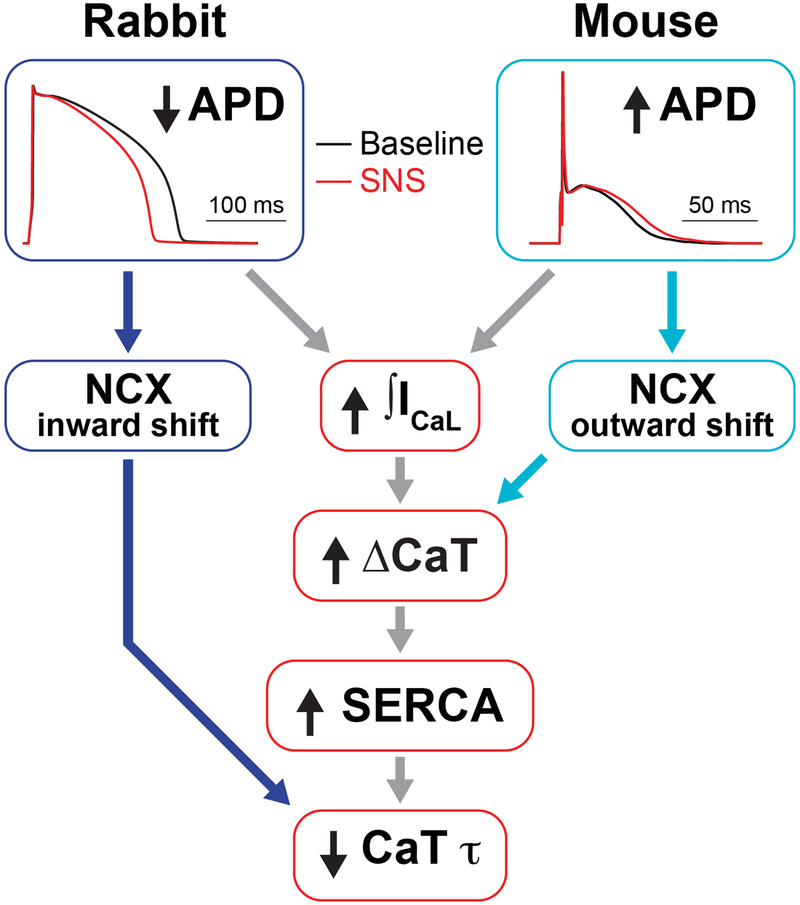Figure 9.
Interspecies differences in AP repolarization allow for enhancement of inotropy and lusitropy during the fight-or-flight response. Sympathetic stimulation transiently prolongs mouse APD and shortens rabbit APD. In mouse, the longer APD allows for slightly greater Ca2+ influx through ICaL and more outward NCX, whereas in rabbit, Ca2+ influx is enhanced with shorter APDs due to a faster increase in the driving force for ICaL as the membrane potential falls. Increased Ca2+ influx enhances Ca2+ transient amplitude (inotropy), which in turn increases SERCA activity that hastens Ca2+ transient decay in both species (lusitropy). Increased inward NCX during the shorter APD also contributes to shorter Ca2+ transients in rabbit.

